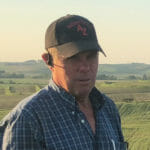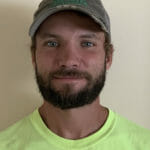2021 Cover Crop Boot Camp
Watch the recordings below to hear how farmers are working with cover crops to reduce nitrogen and herbicide inputs, growing their own cover crop seed and incorporating their cover crops with livestock. Advance your understanding of how cover crops can work for you.
How to Cut Nitrogen With Cover Crops
Nitrogen fertilizer prices have risen with stronger corn and soybean markets. No matter your rotation, cover crops can help you dial in on your nitrogen and improve your bottom line. Hear how two farmers are making the cut in two different rotations. Tom Pyfferoen of Minnesota incorporates legumes into his corn-soy-oat rotation.
Speakers:


How to Grow Your Own Cover Crop Seed
Cover crop seed is in demand! Learn how you can seize the opportunity to grow your own seed, whether for market or for use on your own farm. Joel Lange and Jon Kruse will share their experiences planting, harvesting and ensuring high-quality seed. Joel grows certified seed commercially, while Jon saves seed for on-farm use. Hear about the certification process, equipment tips and opportunities to raise other crops behind cover crop seed.
Speakers:


How to Feed Cover Crops to Livestock
Integrating livestock with cover crops can offer added stability to your operation. Cover crops can serve as a dependable livestock feedstuff while helping improve your soil. In this session, hear how you can take advantage of cover crop feedstuffs. Shanon Jamison, a beginning cover cropper with goals to integrate livestock, will ask questions and learn from Alan Zellmer, an experienced cover cropper who grazes and bales cereal rye.
Speakers:

Shanon Jamison farms corn and soybeans with her family on rolling ground in southern Iowa. A new adopter of cover crops, she is excited and curious about how cover cropping can help the farm’s yields and bottom line. Shanon also raises cattle and aims to integrate them with their newly established cover cropping system.
How to Reduce Herbicide Costs With Cover Crops
Cover crops can be a powerful weed management tool. Hear from Brandon McHugh and Michael Vittetoe, who have successfully used cover crops to suppress weeds and reduce herbicide costs. Brandon terminates his rye with herbicide and has cut out his pre-pass. Michael terminates with herbicide and is experimenting with in-row rolling, cutting residuals out of his soybean program. Learn about timing and techniques to harness covers for weed suppression.
Speakers:


Keynote: Mounting a Strong Cover Crop Offense
Winning over interested farmers and disarming neighborhood naysayers is key to converting new acres to cover crops. Join sales strategist Jen Simpson for a fun, interactive discussion on fielding common objections and placating the skeptics. Drawing on decades of agribusiness sales experience, Jen will facilitate a team huddle on different ways to engage in a why (or why-not) cover crop conversation to help you score points with even the toughest of crowds.
Speaker:
Jennifer Simpson is a wife, mother and 20-year quota-crushing sales producer with extensive ag media and marketing experience under her belt. As part of PFI’s Cover Crop Business Accelerator, Jen helps emerging cover crop agripreneurs establish their brands, build stronger business models and convert new customers.
Acknowledgements
The Cover Crop Boot Camp is funded by the Environmental Protection Agency and Natural Resources Conservation Service, and is made possible by the support of 4R+. Agribusiness Association of Iowa; Coalition to Support Iowa’s Farmers; Conservation Districts of Iowa, Iowa Agriculture Water Alliance; Iowa Corn Growers Association; Iowa Department of Agriculture and Land Stewardship; Iowa Learning Farms; Iowa Seed Association; Iowa Seed Corn Cover Crop Initiative; Iowa Soybean Association, Iowa State University; Montag Manufacturing, Natural Resources Conservation Service, The Nature Conservancy.

